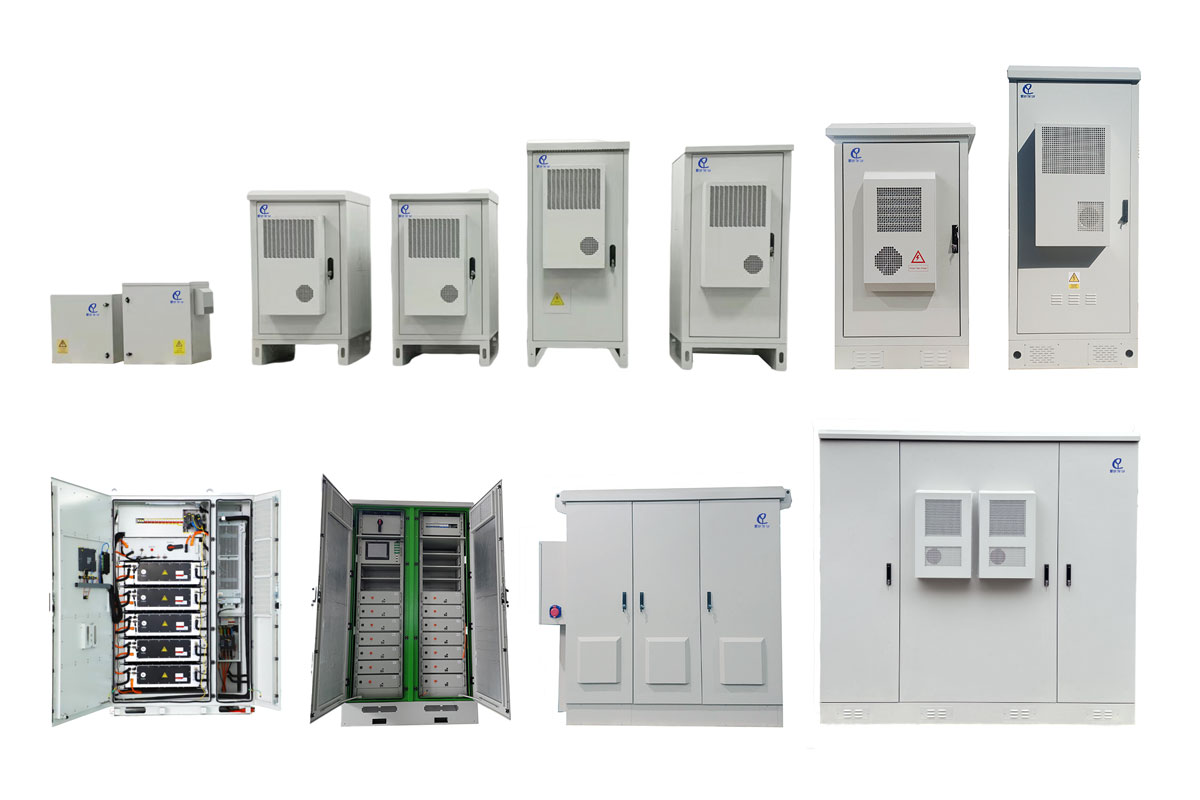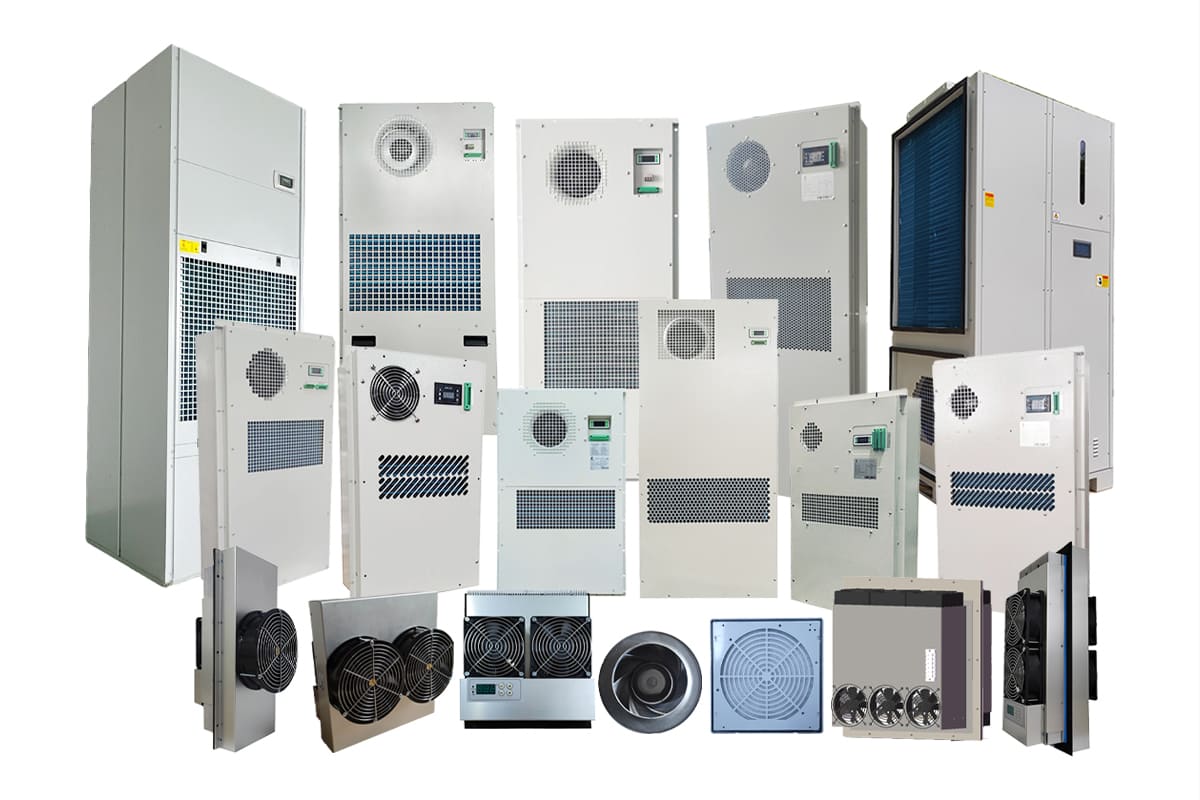
Introduction
In today's digital era, the integrity of network infrastructure is paramount. As emerging technologies—such as 5G, IoT, AI, AR, and VR—demand unparalleled speed and resilience, telecommunication enclosures play a critical role in safeguarding sensitive equipment and optimizing performance. These engineered housings not only protect hardware from environmental and electromagnetic threats but also incorporate advanced thermal management systems, including precision enclosure air conditioners. In this article, we explore the sophisticated design and strategic innovations of modern telecom enclosures, offering unique insights into how industry leaders like Cytech are setting new benchmarks in network reliability and efficiency.
Defining Telecom Enclosures with Precision
Telecommunication enclosures—often referred to as telecommunications enclosures, communications enclosures, or simply telecom enclosures—are specialized housings designed to protect network components from physical, environmental, and electromagnetic hazards. Their role extends beyond physical protection; they ensure that critical systems remain operational across diverse conditions, from controlled data centers to harsh outdoor environments.
Core Functions:
Environmental Shielding: Protects against dust, moisture, corrosive agents, and UV exposure.
Structural Integrity: Withstands vibrations, impacts, and temperature extremes.
EMI Mitigation: Prevents electromagnetic interference that can disrupt high-speed communications.
Material Innovations and Structural Excellence
Modern telecom enclosures are the result of advanced engineering and state-of-the-art materials. Manufacturers employ high-grade stainless steel, composite polymers, and corrosion-resistant alloys to create robust yet lightweight structures. These materials ensure that enclosures meet rigorous industry standards while delivering extended service life and superior performance.
Key Material Attributes:
Durability: High resistance to wear and environmental degradation, essential for both indoor and outdoor applications.
Thermal Conductivity: Engineered to facilitate efficient heat dissipation.
Customization: Tailored designs and finishes to meet specific operational and aesthetic requirements.
Precision Thermal Management: The Role of Enclosure Air Conditioners
Effective thermal regulation is vital for maintaining the reliability of telecom equipment. As network nodes become more densely packed and power consumption rises, innovative cooling solutions are indispensable. Enclosure air conditioners represent a cutting-edge approach to thermal management.
Enhancing Performance with Advanced Cooling
Enclosure air conditioners are engineered to monitor and control internal temperatures with high precision. Utilizing an array of sensors and dynamic airflow management, these systems adjust cooling output in real time to match variable thermal loads.
Advantages Include:
Optimal Temperature Control: Prevents overheating of critical components, ensuring consistent performance.
Energy Efficiency: Balances robust cooling with low power consumption, reducing operational costs.
Extended Component Lifespan: Minimizes thermal stress, prolonging the operational life of network hardware.

5G Infrastructure: Demanding High-Performance Enclosures
The advent of 5G technology has redefined network requirements, introducing challenges such as high-frequency signal management and ultra-low latency. Telecom enclosures designed for 5G must meet stringent criteria to support these advanced systems.
Overcoming 5G Challenges
High Data Throughput: Managing vast amounts of data necessitates superior cooling and EMI shielding.
Dense Network Architecture: Small cells and distributed antennas require precise thermal regulation and robust physical protection.
Outdoor Deployment: Many 5G nodes are located outdoors, necessitating enclosures that withstand extreme weather while maintaining connectivity.
Engineering Solutions for 5G Enclosures
Enhanced Cooling: Integration of enclosure air conditioners ensures optimal performance of high-frequency components.
Advanced EMI Shielding: Specialized designs and coatings mitigate signal interference.
Rugged Construction: Outdoor cabinets are built to resist wind, rain, and temperature extremes, ensuring durability and reliable operation.

IoT and Smart Cities: The Backbone of Modern Connectivity
The expansion of the Internet of Things (IoT) is transforming urban landscapes into interconnected smart cities. Telecom enclosures are essential for protecting the myriad sensors, cameras, and control systems that underpin these environments.
Ensuring Reliability in IoT Deployments
Environmental Protection: Shields IoT devices from pollutants, dust, and moisture in both urban and industrial settings.
Stable Data Transmission: Maintains uninterrupted communication by mitigating EMI and regulating temperature.
Scalability: Modular designs enable seamless integration and expansion as IoT networks evolve.
Industrial Enclosures in Automation
In industrial contexts, where precision and resilience are critical, industrial enclosures must endure harsh conditions—including chemical exposure, heavy vibrations, and extreme temperatures. These robust solutions ensure that production lines and automated systems operate without disruption, safeguarding critical operations.
AI Integration and Predictive Maintenance
Artificial Intelligence (AI) is revolutionizing network management by enabling real-time monitoring and predictive diagnostics. Modern telecom enclosures now incorporate AI-powered sensors that continuously assess internal conditions such as temperature, humidity, and physical impacts.
Transformative Benefits of AI-Driven Enclosures
Predictive Analytics: AI algorithms analyze sensor data to forecast potential failures, enabling proactive maintenance.
Operational Efficiency: Automated adjustments in cooling and power distribution optimize performance and reduce downtime.
Cost Savings: Proactive maintenance strategies lower repair costs and extend the life of expensive network components.
Enhancing Immersive Technologies: AR and VR Applications
Augmented Reality (AR) and Virtual Reality (VR) demand ultra-high-speed connectivity and low-latency performance. The intricate hardware ecosystems supporting AR/VR—from high-resolution displays to real-time graphics processors—require enclosures that offer precise thermal management and robust EMI shielding.
Delivering Flawless Immersive Experiences
High-Performance Cooling: Advanced thermal management, including integrated enclosure air conditioners, ensures that high-powered processing units maintain optimal performance.
Signal Integrity: Superior EMI shielding prevents interference, delivering clear, uninterrupted visual experiences.
Reliability Under Load: Robust enclosure designs maintain functionality even during peak operational conditions, critical for immersive digital applications.
Strategic Innovations by Industry Leaders: Spotlight on Cytech
Telecom cabinet suppliers are pivotal in advancing network infrastructure. Among these, Cytech stands out as a pioneer in high-performance telecom enclosures. Their engineering excellence and commitment to innovation have redefined industry standards.
Cytech’s Product Excellence
Industrial Enclosures: Designed to meet the rigorous demands of manufacturing and automation, these solutions provide robust protection against chemical exposure, vibrations, and extreme temperatures.
Smart Enclosures with AI Integration: By embedding advanced sensors and predictive analytics, Cytech’s smart enclosures offer real-time monitoring and proactive maintenance, reducing downtime and optimizing network performance.
Distinctive Advantages of Cytech Solutions
Cytech’s enclosures are synonymous with durability, customizability, and energy efficiency. Their products not only comply with stringent industry standards but also offer a competitive edge by reducing maintenance costs and extending equipment lifespan. This commitment to excellence positions Cytech as a trusted partner for organizations aiming to future-proof their network infrastructure.
Future Trends: Sustainability and Scalability in Enclosure Design
As digital transformation accelerates, sustainability and scalability have become critical considerations in telecom enclosure design. Manufacturers are increasingly adopting eco-friendly materials and energy-efficient technologies that not only lower operational costs but also reduce environmental impact.
Sustainable Design Innovations
Eco-Friendly Materials: The integration of recycled and low-impact materials is reducing the carbon footprint of telecom enclosures.
Energy Optimization: Advanced energy management systems ensure that enclosures operate efficiently, balancing performance with minimal power consumption.
Regulatory Compliance: Modern designs adhere to stringent environmental and safety standards, ensuring long-term viability.
Modular and Scalable Solutions
To accommodate evolving technological needs, future telecom enclosures are being designed with modularity in mind. These scalable solutions allow for easy upgrades and reconfigurations, enabling network infrastructure to expand seamlessly as demands increase.
Conclusion
Telecom enclosures are the unsung heroes of modern connectivity, providing the critical protection and performance optimization required for advanced technologies such as 5G, IoT, AI, AR, and VR. With precision engineering, robust materials, and state-of-the-art thermal management systems—including integrated enclosure air conditioners—these enclosures ensure that network components operate reliably even under the harshest conditions. Industry leaders like Cytech are at the forefront of this evolution, offering customizable, energy-efficient, and AI-integrated solutions that not only meet current demands but also pave the way for future innovations. As digital transformation continues to reshape our world, investing in next-generation telecom enclosures will be essential for maintaining a competitive and resilient network infrastructure.
FAQs
Q1: What makes modern telecom enclosures critical for advanced networks?
A: They protect sensitive network components from environmental, mechanical, and electromagnetic threats while providing precise thermal regulation—essential for maintaining the performance of technologies like 5G and IoT.
Q2: How do enclosure air conditioners enhance telecom enclosures?
A: They offer precise, real-time thermal management by dynamically adjusting cooling to prevent overheating, thus extending component lifespans and optimizing energy efficiency.
Q3: What role does AI play in maintaining telecom enclosures?
A: AI-driven sensors enable real-time monitoring and predictive maintenance, allowing operators to address potential issues proactively, thereby reducing downtime and lowering maintenance costs.
Q4: How do outdoor telecommunication cabinets differ from indoor enclosures?
A: Outdoor cabinets are engineered to withstand extreme weather conditions and environmental stressors, incorporating advanced cooling and EMI shielding to support high-performance applications in harsh settings.
Q5: Why is Cytech a leader in telecom enclosure solutions?
A: Cytech delivers high-performance, customizable enclosures that integrate advanced cooling, AI-powered monitoring, and robust construction—ensuring reliable and sustainable operation for modern network infrastructures.














